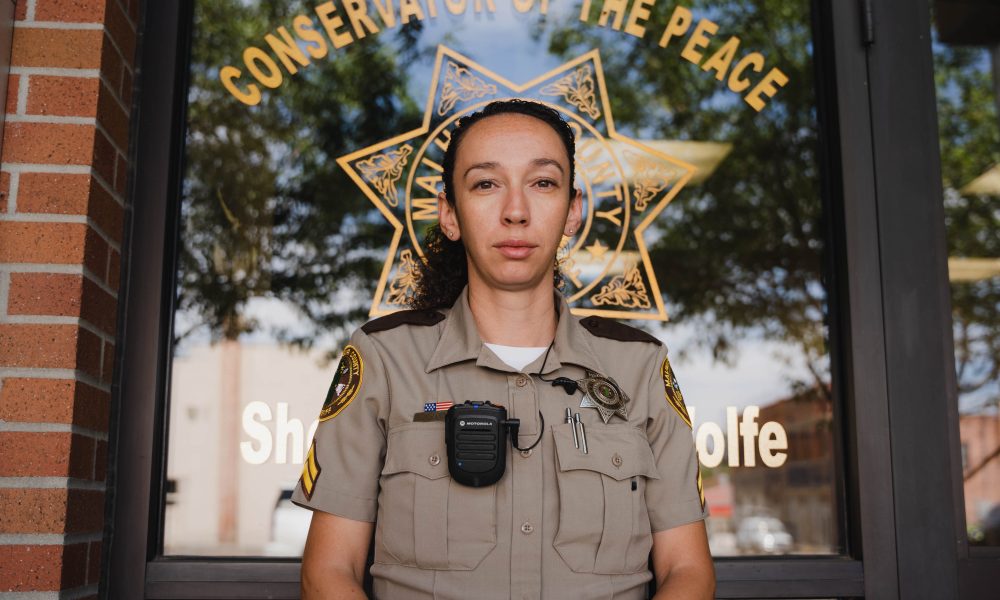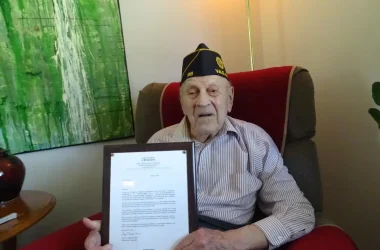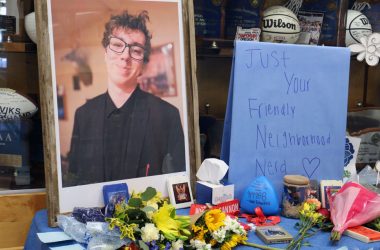The patrol was like any other. The only thing out of the ordinary was that Deputy Haylee Harding had a high school senior with her for a ride-along.
“We were just sitting in broad daylight on Southeast 18th Avenue, and I had a car headed toward me and it was going 13 miles an hour over the speed limit,” Harding said. She decided to pull over the vehicle for a routine traffic stop.
“I walk up to the driver’s window and immediately notice that the passenger is just slumped over, kind of towards the center console of this little car,” Harding said.
After five years with the sheriff’s office she has encountered a lot of different situations but nothing quite like this.
The driver told the deputy the front seat rider was just sleeping, but Harding realized the situation was much more serious. The passenger was sweating profusely, nonresponsive, and his breathing had slowed.
Soon, he started gurgling.
“Something in my brain, I don’t even remember the conscious decision of ‘Hey, this is an overdose,’ but apparently my brain told me this is what an overdose looks like, you know. I run to my car and call for medical for a suspected overdose,” Harding said.
‘I don’t know why everyone isn’t talking about this. It’s scary for us too, you know. We never want to have to respond to an overdose death.’
Haylee Harding, Malheur County Sheriff’s Deputy
Harding administered the first dose of Naloxone, the overdose antidote often known by its brand name Narcan, and after the medics gave him a second dose, the passenger regained consciousness and was taken to the hospital.
Harding determined the following day that the passenger had left drug treatment in Idaho a few hours earlier and the driver didn’t know when he’d taken fentanyl over that time. Before Harding left the hospital, the young man and the passenger who had overdosed asked if she had any extra Narcan they could take.
“I kind of tried to have a talk with him like, you haven’t even been out of rehab for an hour and a half, and you almost died again,” said Harding.
Harding’s experience earlier this year isn’t out of the ordinary with the rising number of fentanyl overdoses in Malheur County. While it’s usual for law enforcement to respond to drug-related crimes and incidents, what Harding faced shows how normalized overdoses have become. She believes that in the last six months there are “definitely been more overdose calls.”
It also shows how difficult it can be to recognize an overdose, and how awareness and training can make a lifesaving difference. Harding would like the opportunity to work in outreach at local schools to help educate kids and young adults about the high risk of counterfeit fentanyl pills.
“I don’t know why everyone isn’t talking about this,” said Harding. “It’s scary for us too, you know. We never want to have to respond to an overdose death and you know, it affects more people than people probably realize. We just wish there was something we could do to really take a stance against it.”
–Mac Larsen, The Enterprise
RELATED COVERAGE:
PART 1: SNEAKY KILLER: Fentanyl in Malheur County
EXCELLENCE IN JOURNALISM – Available for $7.50 a month. Subscribe to the digital service of the Enterprise and get the very best in local journalism. We report with care, attention to accuracy, and an unwavering devotion to fairness. Get the kind of news you’ve been looking for – day in and day out from the Enterprise.




